It’s difficult to replicate the in-store shopping experience online, but brands are constantly finding new and exciting ways to showcase their products through a screen. Luckily, product pages are basically the final frontier for shoppers deciding whether to buy or not.
The rise of new technology has seen product pages, also called product detail pages (PDPs), evolve significantly over the past couple of years to align with the increasing demands of online shoppers. According to 2023 Salsify research, 55% of shoppers worldwide say that the online shopping experience is essential for building brand loyalty.
But how can you turn a static product page into an exciting, dimensional experience? The answer: innovative web design.
Here are some of the design trends that will define 2023 and the brands that are expertly executing them.
Get Inspired: 10 Best Product Page Design Examples
Here are 10 brands that are executing the best product page designs and tips for emulating them.
1. Interactive Product Visuals: Helix Mattresses
The biggest downside of online shopping is that customers can’t see or feel a product before they buy. To tackle this, brands are creating interactive visuals that let shoppers engage with the product in multiple different ways.
Obviously, customers still can’t touch a product, but they can get a better understanding of what it looks like in 3D — and, as a bonus, they’ll stay on the page longer while they click around and learn more about the product.
Helix Mattresses uses a flat-lay illustration of its product with touch points that customers can click on to learn more about each element. This helps shoppers find the information they need quickly and encourages them to visualize the product in the process.
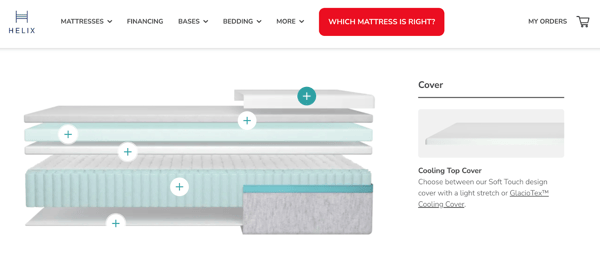
Image Source: Helix Mattresses
2. Animated Page Transitions: Drunk Elephant
Scrolling a product page should be fun and engaging — a bit like holding a product in your hand and spinning it around to find additional details. Brands like Drunk Elephant are recreating this online by using animated page transitions to encourage shoppers to continue scrolling. There’s an incentive to keep going because you want to find out what information is next and how it’s going to be delivered.
As well as implementing fun fade-ins, animated images, and interactive illustrations, Drunk Elephant also incorporates video for a full multimedia shopping experience.
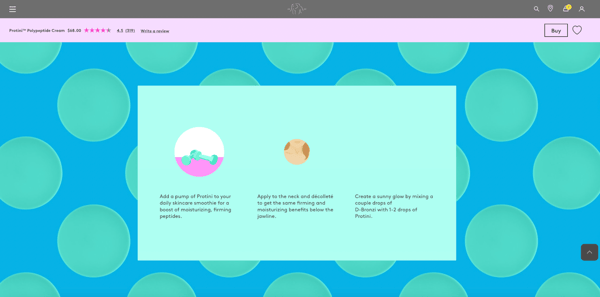
Image Source: Drunk Elephant
3. Minimalist Design: Our Place
Gone are the days of busy PDPs where brands try to cram in as much information as possible alongside big flashing discount signs and too much text. Today, brands are paring back their product pages to create an intentional and peaceful shopping journey.
Take the homeware brand Our Place, for example, which uses muted colors and very intentional sections on its product pages. It also incorporates plenty of white space to reduce the amount of overwhelm and keep shoppers focused.
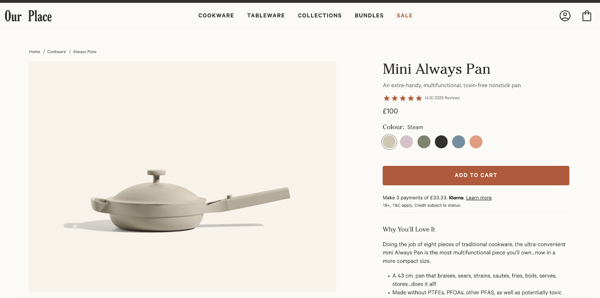
Image Source: Our Place
4. Storytelling Elements: Death Wish Coffee
Research by Search Engine Watch reveals that storytelling can increase conversions by 30%, so it’s no wonder that brands are turning to this tactic to differentiate themselves from competitors and build trust.
Death Wish Coffee pairs storytelling techniques with bold, eye-catching graphics to make a statement on its product pages. Shoppers can learn more about how the product is made while being presented with a design they’re going to remember.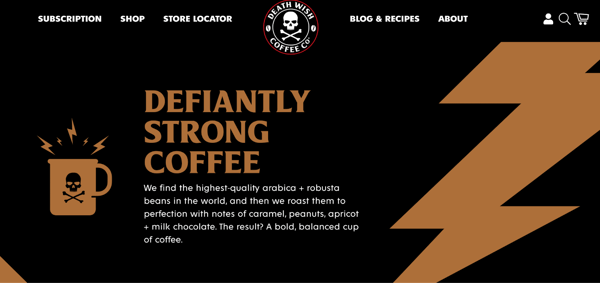
Image Source: Death Wish Coffee
5. Using Typography as an Image: Free Nod
Typography is a powerful design technique that can be used to convey information and look good at the same time. Forward-thinking brands are using fun fonts and bold typography to share product details and create a hierarchical experience for shoppers.
Studio Nod, a headphone brand, uses oversized text to highlight some of the features and benefits of its products. It stops shoppers mid-scroll to deliver critical information that might fuel their decision to purchase.
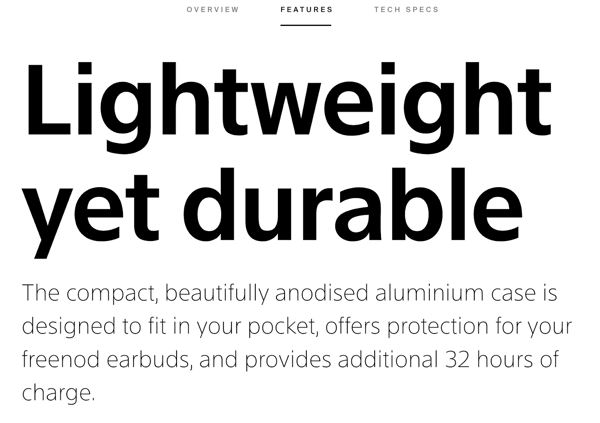
Image Source: Studio Nod
6. 360-Degree Images: Thinx
Incorporating 360-degree product photos lets shoppers explore products at their own pace and move around the image to focus on the parts they’re most interested in.
Thinx uses 360-degree shots to show off its products from every angle, which helps shoppers visualize what it will look like in real life.
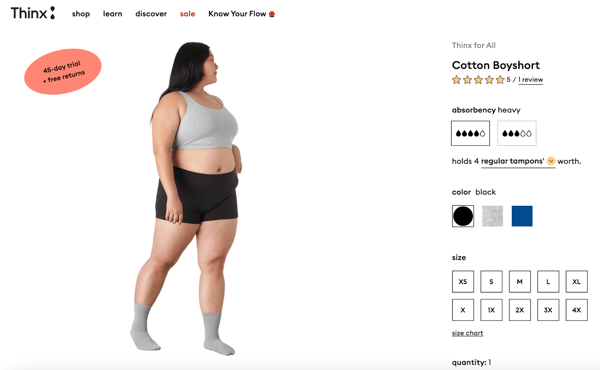
Image Source: Thinx
7. Product Videos: Bang & Olufsen and Tangle Teezer
While 360-degree photos let shoppers see a product in 3D, product videos show what it might look like in action. Video is a great way to highlight how a product can be used, what it looks like when it’s in use, and give shoppers a real-life perspective on things that an image alone can’t convey, like size, material, and extra features.
Bang & Olufsen use video to highlight the quality of their sound systems. At $6,000 a piece, it’s crucial that shoppers get an up-close look at the material, the sleek design, and what they’re getting for their money.
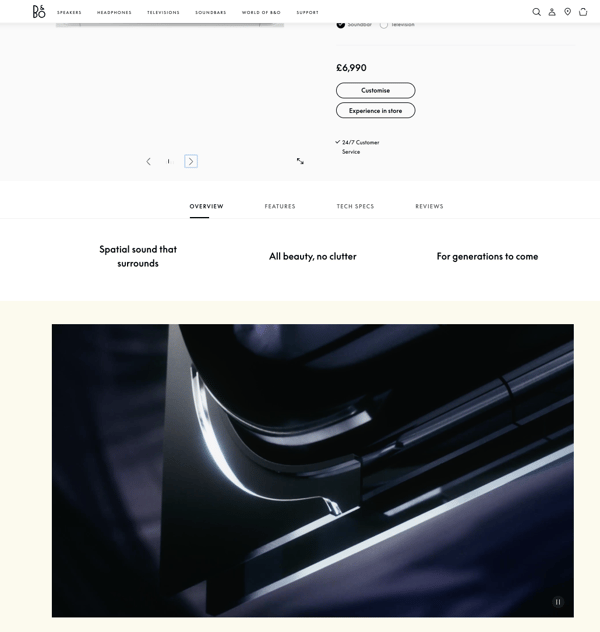
Image Source: Bang & Olufsen
Tangle Teezer uses video in a different way. The hair product brand shares how-to videos on its PDPs to show shoppers how they can use the accessories.
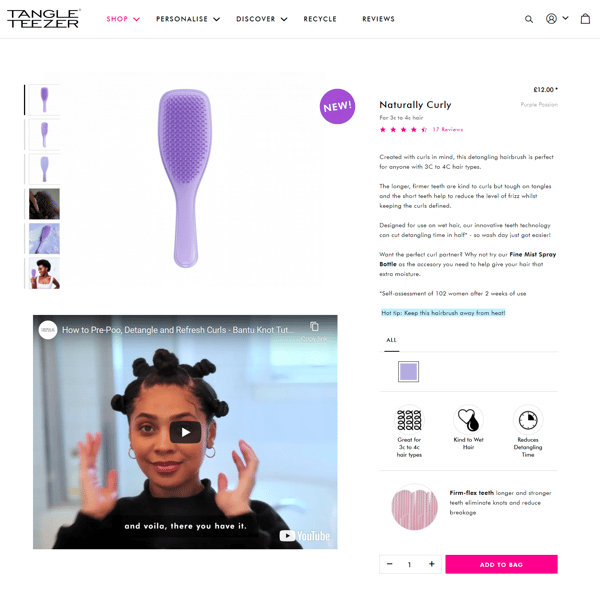
Image Source: Tangle Teezer
8. Lifestyle Images: Finisterre
Instead of sharing product photos of an item displayed against a plain white background, brands are turning to lifestyle photos to provide an aspirational feel to products. This type of photography also helps brands stand out by portraying an entire potential lifestyle around the product and encouraging shoppers to visualize what they’re purchasing.
Finisterre is a great example of a brand doing this. The surfwear brand uses photos of its products in real-life situations that its target customer base can relate to.
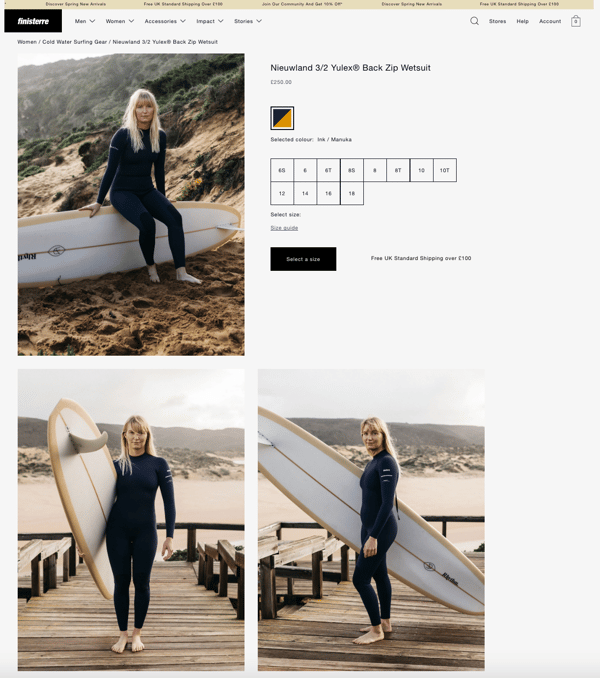
Image Source: Finisterre
9. AI And Chatbots: Polaroid
Artificial Intelligence (AI) chatbots help brands connect with customers and answer questions in the moment. This can reduce friction in the buying cycle and stop shoppers from going elsewhere if they can’t get the information they need.
Camera merchant Polaroid has a pop-up chatbot on each product page that suggests FAQs and lets customers type in their questions to get instant answers.
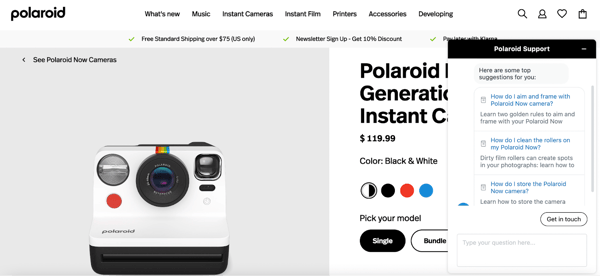
Image Source: Polaroid
10. Personalized and Innovative Sizing Charts: Ride Store
According to research by RetailDive, over 50% of online purchases are returned due to sizing issues. It’s tricky for customers to get a good understanding of what size they might need through a screen, but there is a way around it. Some brands are implementing a personalized and interactive sizing chart to help shoppers find the best fit.
Take Ride Store, for example. The outdoor clothing brand has an interactive tool where shoppers can type in their size and weight and get personalized feedback on what size they should buy.
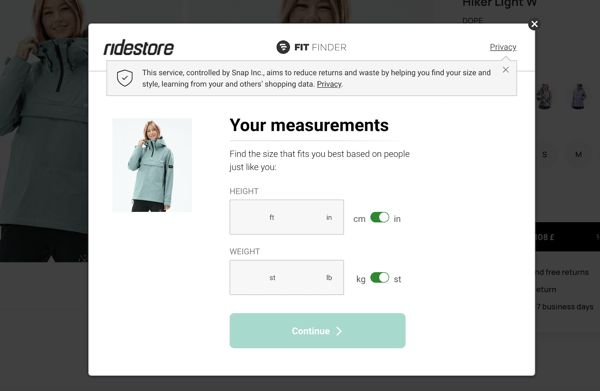
Image Source: Ride Store
Implement the Best Trends in Web Design for Ecommerce in Your Store
Using exciting, new retail trends in your ecommerce store can dramatically enhance the online shopping experience. Bold fonts, beautiful imagery, and interactive elements all help customers explore your products in greater detail and make quick purchasing decisions. And, they go a long way in building brand trust and cementing brand awareness by setting you apart from the competition.
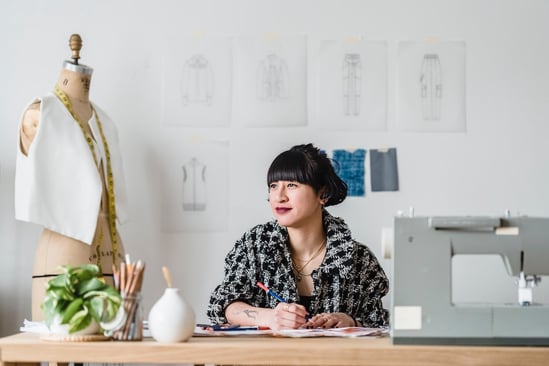
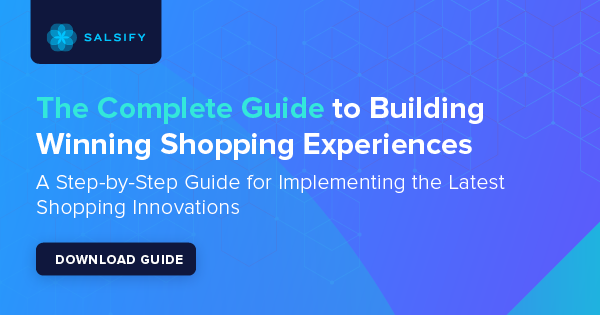












.svg)